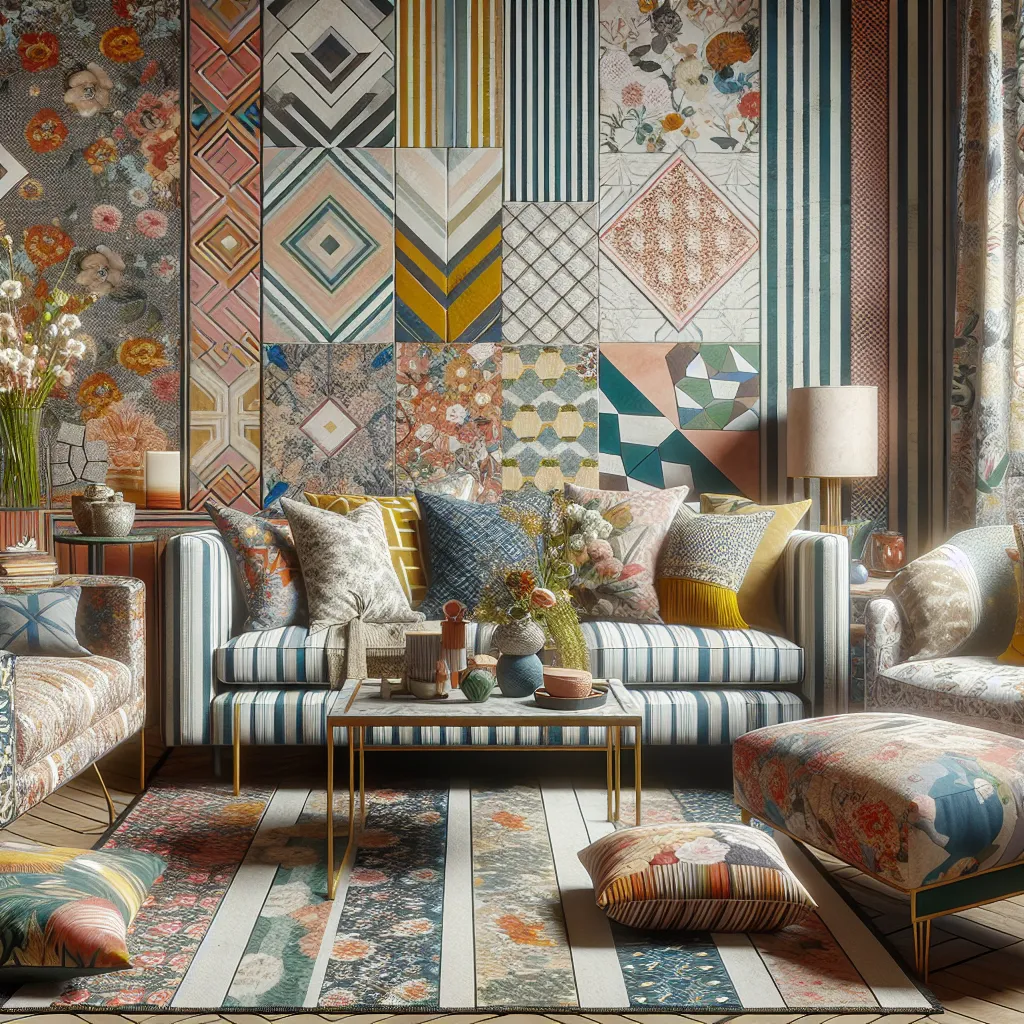Understanding the Basics of Mixing Patterns in Interior Design
Understanding the basics of mixing patterns in interior design is essential for creating a visually appealing and cohesive space. When done right, mixing patterns can add depth, character, and interest to a room, but it requires a thoughtful approach to avoid creating a chaotic or overwhelming environment. By mastering the art of mixing patterns, you can elevate your interior decor and infuse your personal style into your living space.
One key principle to keep in mind when mixing patterns is to vary the scale of the prints. Combining large-scale patterns with small-scale ones creates a balanced and harmonious look. For example, pairing a bold, oversized floral print with a delicate pinstripe can create a dynamic visual contrast that is both visually stimulating and aesthetically pleasing.
Another fundamental aspect of mixing patterns is to pay attention to the color palette. Choosing patterns with a cohesive color scheme will help tie the different elements together. Whether you opt for complementary or monochromatic colors, ensuring that there is a unifying color that appears in each pattern will help create a sense of cohesion in the space.
Furthermore, mixing different types of patterns, such as florals, stripes, geometric, and abstract designs, can add depth and texture to a room. However, it’s important to maintain a sense of balance by incorporating solid-colored elements to provide a visual break and prevent the patterns from overwhelming the space.
Ultimately, understanding the basics of mixing patterns in interior design involves a thoughtful combination of scale, color, and variety. By mastering this art, you can achieve an eclectic decor style that reflects your personality and creates an inviting and visually engaging space.
Mastering Color and Scale in Pattern Mixing
Mastering color and scale in pattern mixing is a key aspect of the art of combining different patterns in home decor. When it comes to mixing patterns, understanding how to play with colors and scale is essential for creating an eclectic yet harmonious look in your living space.
Color coordination is crucial when mixing patterns. Start by identifying a common color in different patterns, which will tie them together cohesively. Whether it’s a shared hue or complementary tones, having a unifying color will create a sense of cohesion amidst diverse patterns. Moreover, consider the overall color palette of the room to ensure that the mixed patterns blend seamlessly with the existing decor.
Scale, or the size of the patterns, is another important factor in successful pattern mixing. Pairing different scales of patterns – such as a large floral print with a small geometric pattern – adds visual interest and prevents the space from feeling overwhelming. Additionally, mixing various scales of patterns creates a dynamic and layered look, adding depth to the room.
By mastering color coordination and understanding the impact of scale, you can confidently mix patterns in your decor, adding personality and character to your living space while maintaining a sense of balance and visual appeal.
Incorporating Textures and Layers: A Key to Successful Pattern Mixing
When it comes to mastering the art of mixing patterns in home decor, incorporating textures and layers is a key element for success. By intertwining different textures and layering various patterns within a space, one can achieve a visually stimulating and harmonious design scheme.
Textured fabrics such as wool, linen, and velvet can add depth to a room and provide a counterbalance to the busyness of mixed patterns. Consider introducing a chunky knit throw or a nubby rug to bring in textural contrast alongside patterned elements.
Layering patterns through textiles, such as throw pillows, curtains, and upholstery, allows for a cohesive and dynamic look. Start with a foundational solid base, then introduce different scales of patterns in a similar color palette. For example, pair a small geometric print with a larger floral pattern, keeping the color tones complementary.
Additionally, consider incorporating metallic accents, natural materials like rattan or wood, and even a touch of greenery to further enrich the tactile and visual experience within the space. This multi-layered approach creates a sense of depth and visual interest, elevating the overall design.
Mastering the art of incorporating textures and layers into pattern mixing requires a thoughtful curation of elements that complement each other while adding dimension and character to the space. By skillfully intertwining varied textures and layering patterns, one can craft a visually captivating and cohesive eclectic decor.
Creating Cohesion in Pattern-Clashing Spaces
Creating cohesion in pattern-clashing spaces is a fundamental aspect of mastering the art of mixing patterns in eclectic decor. When combining different patterns, such as stripes, florals, and geometric designs, it’s essential to maintain a cohesive look to avoid the space feeling chaotic or overwhelming. One effective way to achieve harmony in pattern-clashing spaces is by selecting a cohesive color palette. Choosing patterns with a common color or complementary hues can help tie the diverse elements together, creating visual unity within the space.
Another technique for creating cohesion is to vary the scale of patterns. Mixing large-scale patterns with smaller, intricate designs can add visual interest while ensuring that the patterns don’t compete with each other. Additionally, introducing solid blocks of color through furniture or accessories can provide the eyes with a resting place amidst the pattern play, contributing to a balanced overall aesthetic.
Furthermore, incorporating elements of nature, such as botanical prints or organic patterns, can introduce a sense of fluidity and cohesiveness, especially in spaces with diverse pattern combinations. This can evoke a tranquil and balanced atmosphere, enhancing the overall visual appeal of the eclectic decor.
In conclusion, creating cohesion in pattern-clashing spaces involves thoughtful consideration of color palettes, scale variation, and the strategic introduction of natural elements. By implementing these techniques, it’s possible to master the art of mixing patterns and achieve an aesthetically pleasing and harmonious eclectic decor.

